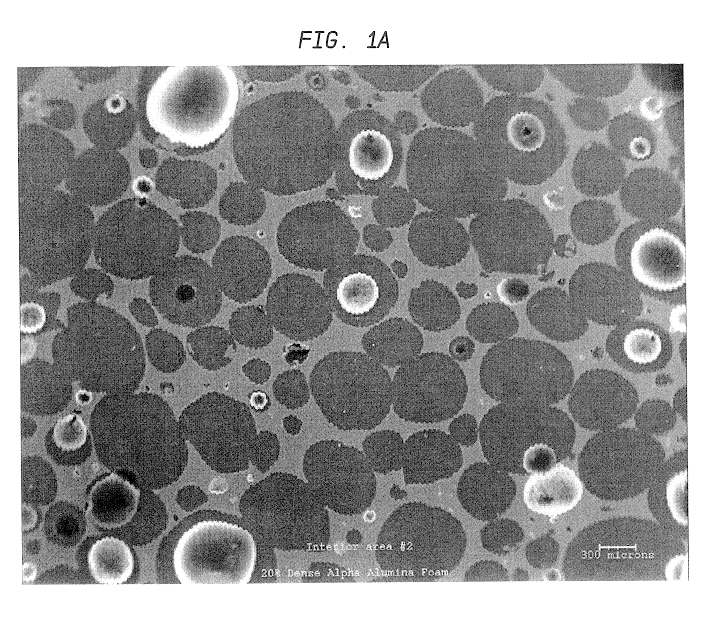Catalytic oxidation process
a catalytic oxidation and reaction technology, applied in the direction of physical/chemical process catalysts, metal/metal-oxide/metal-hydroxide catalysts, bulk chemical production, etc., can solve the problems of high temperature generation, reactors, catalysts and other process equipment, and the gases formed in such a reaction are not directly useful for the production of valuable chemical compounds
- Summary
- Abstract
- Description
- Claims
- Application Information
AI Technical Summary
Benefits of technology
Problems solved by technology
Method used
Image
Examples
example 1
Catalyst R and Catalyst E were tested in a process for the catalytic partial oxidation of methane under the same conditions: the gas flow rate, expressed as gaseous hourly space velocity (GHSV, calculated as the flow rate of gases at "standard" temperature and pressure, i.e., 1 atm / 101.3 kPa and 68.degree. F. / 20.degree. C., divided by the total volume of the catalyst) in all runs was=144,207 / hr; pressure was 3.8-7.4 psig (0.126-0.150 MPa) and other conditions as noted in the table. All carbon balances closed between 98.9-99.8% (No other significant products were observed, i.e., none were present in amounts greater than 0.1 wt. %). A quartz reactor enclosed in a furnace was used to contain the catalyst. The furnace was used to control catalyst inlet temperature and minimize heat loss from the catalyst bed. Product gases, CO, CO.sub.2, H.sub.2, C.sub.2 H.sub.2, C.sub.2 H.sub.4, C.sub.2 H.sub.6, were quantified by GC (there was no detectable O.sub.2 in the product stream).
The table bel...
example 2
Scanning Electron Microscopy (SEM)
SEM was used to investigate the microstructure and uniformity of ceramic foams representative of those used to prepare Catalyst R and Catalyst E. Representative results are shown in FIGS. 1a and 1b. Each of these ceramic foam samples are identified as 65 ppi materials, but the sample of FIG. 1b is macroscopically more uniform. In addition, it contains very few of the smallest pore sizes, e.g., about 10 to about 40 microns (this is believed to result from a difference in the methods used to prepare the two materials).
The non-uniform sample of FIG. 1a also has an undesirable density gradient (for purposes of the present invention) having more foam material near the edges of the sample and an undesirable (also with regard to the present invention) low density of foam in the center of the sample. This is also believed to result from the method used to prepare the foam that is believed to involve a dip coating of alumina slip on an organic foam body. Suc...
example 3
X-Ray Microtomography (XMT)
In this example, X-ray microtomography was carried out on a catalyst sample similar to catalyst R, (the ceramic foam carrier starting material was obtained from the same source as that used for catalyst R, Hi-Tech Ceramics, Inc.) with the following differences:
(a) 45 vs. 65 ppi;
(b) washcoat loading=0.34 g / in..sup.3 (0.0207 g / cm.sup.3) vs. 0.24 g / in.sup.3 (0.0146 g / cm.sup.3); and
(c) sample size=0.5 in. diameter.times.0.5 in. long (1.27 cm..times.1.27 cm.) vs. 0.75 inch (1.905 cm) diameter.times.0.5 inch (1.27 cm) long
The density distribution of the ceramic foam carrier was measured at an x-ray energy of 23.3 keV. The concentration distribution of Rh was measured by subtracting the projections acquired at 23.3 keV (below the Rh K absorption edge) from projections acquired at 23.4 keV (above the Rh K absorption edge) and reconstructing the difference signal. The spatial resolution of the resulting 512.times.512.times.360 3D images is 11.54 microns / pixel. The ...
PUM
 Login to View More
Login to View More Abstract
Description
Claims
Application Information
 Login to View More
Login to View More - R&D
- Intellectual Property
- Life Sciences
- Materials
- Tech Scout
- Unparalleled Data Quality
- Higher Quality Content
- 60% Fewer Hallucinations
Browse by: Latest US Patents, China's latest patents, Technical Efficacy Thesaurus, Application Domain, Technology Topic, Popular Technical Reports.
© 2025 PatSnap. All rights reserved.Legal|Privacy policy|Modern Slavery Act Transparency Statement|Sitemap|About US| Contact US: help@patsnap.com



